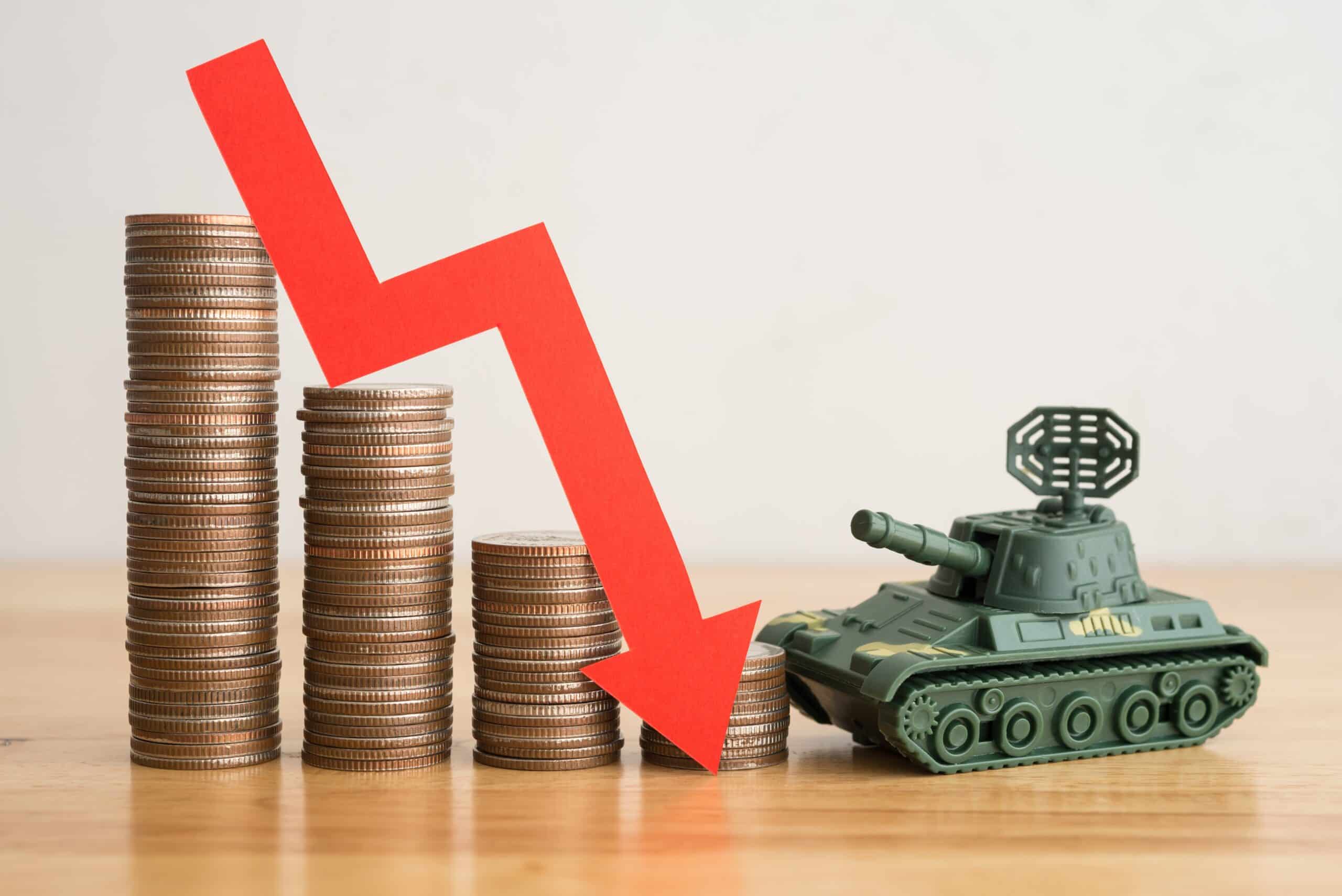NFTs: The crypto solution for the art world?
NFTs: The crypto solution for the art world?
Non-fungible tokens, or NFTs, have been making headlines during the past few months as they went from something very few people had heard of, to the latest crypto trend. NFT advocates say that they can fix a significant problem within art and entertainment, while critics only see it as another crypto bubble soon to pop.
What are NFTs?
Non-fungible tokens are individually unique digital assets — which include songs, images, videos, and even tweets. The metadata that an NFT is composed of makes it unique through various attributes, including size, rarity, the artist’s name, etc. [1] NFTs determine an item’s ownership by storing the details in a digital ledger known as a blockchain. [2]
In the context of NFTs, there is some debate over this concept of ownership. Indeed, in various transactions involving NFTs, they do not represent the asset itself, but rather only the record of its ownership. But the inherent characteristics that are commonly mentioned when defining these tokens as a “new form of ownership” include scarcity and uniqueness, trade and interoperability, and immutability. [3]
A brief history of NFTs
What could be called the ancestor of NFTs dates back to 2012 when “colored coins” were first mentioned in an article titled “bitcoin 2.X (aka Colored Bitcoin) — initial specs”, by Yoni Assia, which describes coins that are made of small denominations of a bitcoin and can be as small as a single satoshi, the smallest unit of a bitcoin. Another article, published by Meni Rosenfeld titled “Overview of Colored Coins”, discussed the potential of these new assets.
Further iterations followed over the years, such as the trading cards on Counterparty, a peer-to-peer financial platform and distributed, open-source Internet protocol built on top of the Bitcoin blockchain, as well as Cryptopunks, which are unique characters generated on the Ethereum blockchain, and CryptoKitties, a blockchain-based virtual game that allows players to adopt, raise, and trade virtual cats. These experiments collectively laid the groundwork for the growth the market would witness until NFTs finally reached the mainstream. [2, 3] In fact, monthly sales on OpenSea, an NFT marketplace, reached $95.2 million in February 2021, up from $8 million in January of the same year. [4, 5]
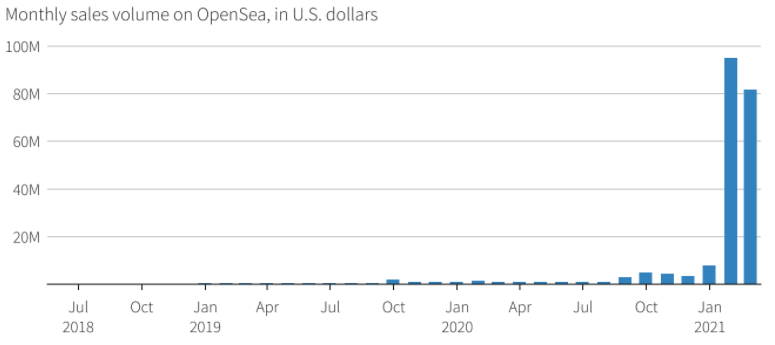
How much are NFTs worth?
Everyone is able to tokenize digital assets and sell them as NFTs, but interest in these past few months has been fueled by headlines of multi-million-dollar sales.
In March, Mike Winkelman, a conceptual 3D artist who goes by Beeple, became the third wealthiest living artist after renowned auction house Christie’s sold his digital work, a piece titled “Everydays: The First 5000 Days” for $69.3 million (€58.9 million), breaking all previous NFT sales records.
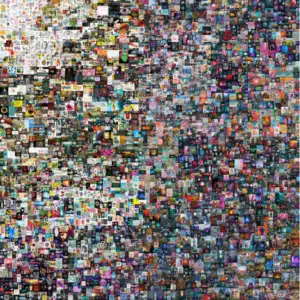
In the same month, Kings of Leon, a music group, released one of the first major records to also be released as a collection of NFTs and generated between $1.45 and $2 million in sales in its first five days, and electronic musician Grimes sold digital artwork for around $6 million (€5.1 million). [6, 7, 8]
The National Basketball Association (NBA) and its players union (NBPA) partnered with Vancouver-based blockchain company Dapper Labs to develop NBA Top Shot, a new digital platform where fans can buy, sell and trade NBA moments, which are packaged highlight clips that operate like digital trading cards. To date, the platform has generated around $500 million in sales. The most valuable NFT was that of LeBron James dunking against the Houston Rockets, which sold for a reported $387,600. [9]
Jack Dorsey, the CEO of Twitter, offered his first tweet, which was published on March 21, 2006, for sale as an NFT. It was sold in late March 2021 for 1,630.58 ether, a cryptocurrency that was equivalent to about $2.9 million. [10]
How can artists benefit from NFTs?
According to a report published by Citi GPS, the potential revenue of the music business in 2017 was $43 billion, only 12% of that amount flowed to artists. Indeed, the aggregate revenue of the industry is shrunk by various costs including retailer mark-up for music sales (digital or physical), the cost to put on a concert, the costs of running various distribution platforms (e.g. Spotify), and EBITDA, etc… Fees from royalty collection entities, costs for the artist’s manager, record producer, concert promoter, concert agents, and record labels must also be subtracted. The remaining balance is then the only revenue for the artist. [11] In this context, NFTs could become an important and independent revenue stream for musicians by cutting out the middlemen in an industry rife with them.
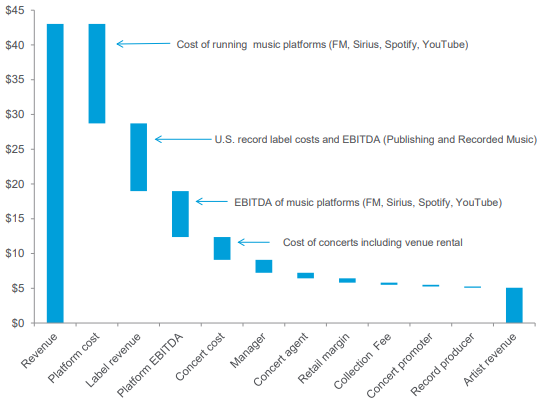
Digital artists face a major challenge, which lies in the very definition of their work. Digital art is by nature infinitely reproducible. NFTs, which work as public ledgers, offer a technological solution. Collectors can now buy an NFT that essentially acts as a tamper-proof digital receipt, which allows the artist to retain a percentage of the revenue each time their work is sold. NFTs can thus benefit established and emerging digital artists alike by providing additional revenue streams. [12]
A double-edged sword
It is important to note that the NFT boom also has its drawbacks. Many artists around the world have been reporting the theft and sale of their work on NFT sites without their knowledge or permission. Automated technology, such as a tweet-mining bot which is at the center of many reports of theft, can “tokenize” a tweet or an image in an instant. [13]
Another major concern surrounding NFTs is the negative impact they have on the environment. Indeed, they are built on the same blockchain technology used by cryptocurrencies which are yet to solve the issue of their high energy consumption. For instance, a single NFT transaction on the Ethereum network consumes as much as the daily energy used by two American households. [14]
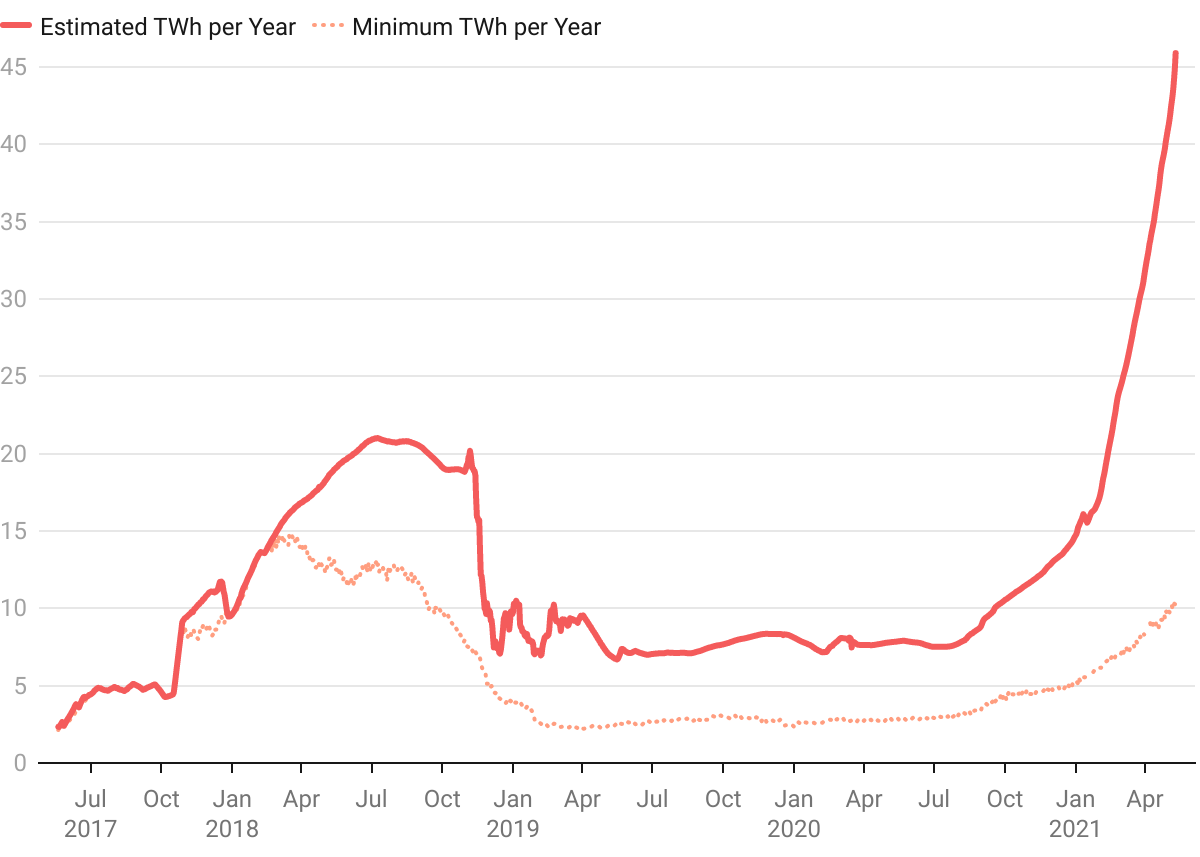
Most of today’s blockchain networks function on security systems based on special computers called “miners”, which compete to solve complex math puzzles. Mining requires a significant amount of computational power, which in turn causes high electricity consumption.
Ethereum’s technology is said to be moving towards a design that would be less computationally intensive to try to compete with more efficient blockchains. The speed of this transformation into an eco-friendlier version of blockchain technology may decide the future of the NFT market in the short term, as some artists feel strongly about climate change trends and are opposed to NFTs because of their environmental impact. [14]
With these drawbacks in mind, and considering the recent plunges of Bitcoin and Ether [16] which may scare away potential investors not familiar with the market, it remains an open question whether NFTs can truly become the next form of art and entertainment monetization, or become the next financial bubble to burst.
Sources:
[1] NonFungible, Non-Fungible Tokens Yearly Report, 2020
[2] Euronews, What are NFTs and why are they suddenly so popular?, 2021
[4] Digital Trends, A brief history of NFTs, 2021
[5] Medium, The History of Non-Fungible Tokens (NFTs), 2019
[6] Reuters, Explainer: NFTs are hot. So what are they, 2021
[7] NME, Kings Of Leon have generated $2million from NFT sales of their new album, 2021
[8] Cointelegraph, ’Breaking new ground is never easy’ — Kings of Leon’s NFT release takes in $2M, 2021
[10] CNBC, Twitter CEO Jack Dorsey’s first tweet NFT sells for $2.9 million, 2021
[11] Citi GPS, Putting the Band Back Together – Remastering the World of Music, 2018
[12] UCLA, For digital artists, NFTs are promising – and problematic, 2021
[13] ABC News, Artists report discovering their work is being stolen and sold as NFTs, 2021
[15] Digiconomist, Ethereum Energy Consumption Index
[16] CNBC, Bitcoin’s wild price moves stem from its design, 2021








